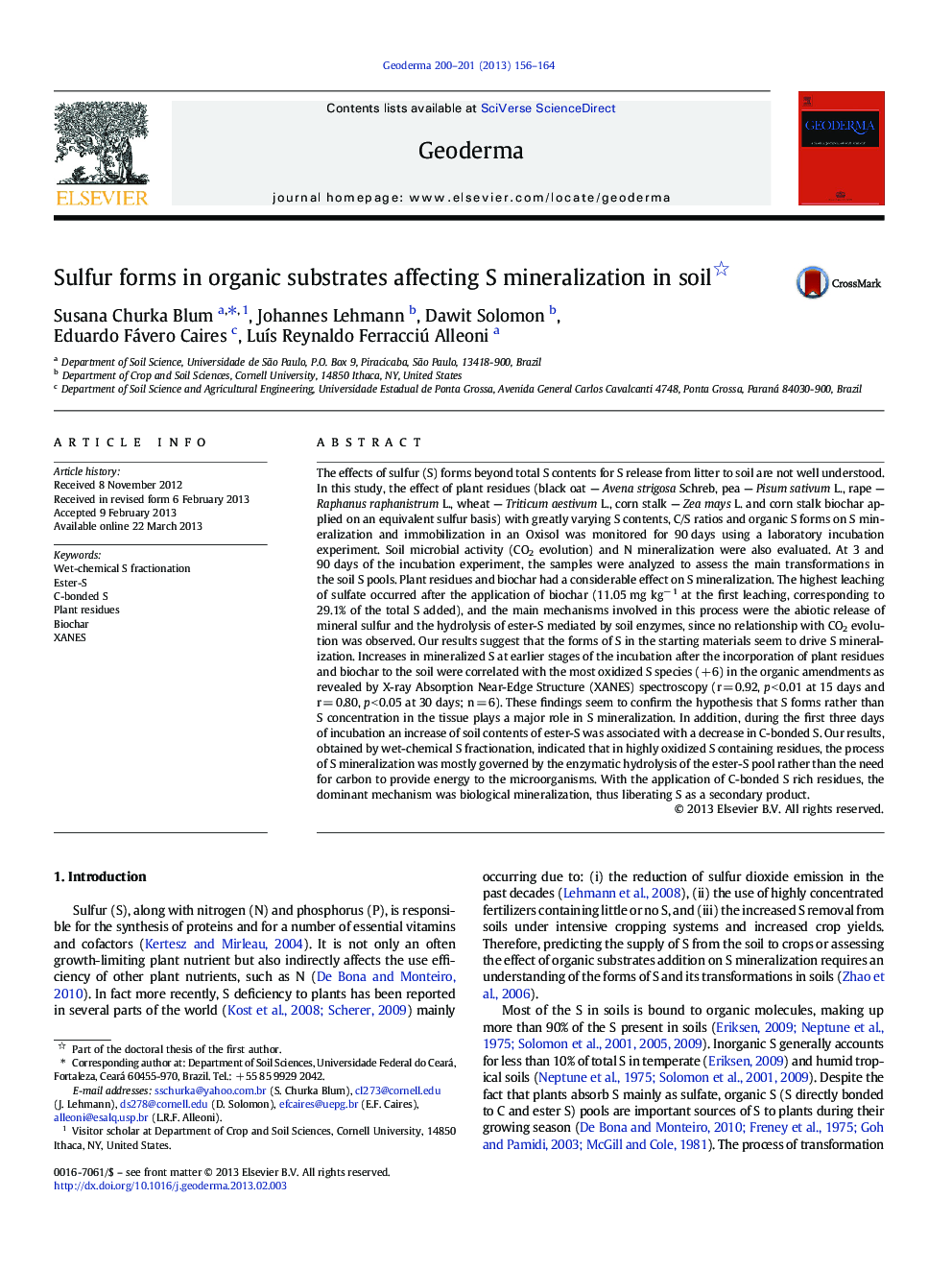| Article ID | Journal | Published Year | Pages | File Type |
|---|---|---|---|---|
| 4573527 | Geoderma | 2013 | 9 Pages |
The effects of sulfur (S) forms beyond total S contents for S release from litter to soil are not well understood. In this study, the effect of plant residues (black oat — Avena strigosa Schreb, pea — Pisum sativum L., rape — Raphanus raphanistrum L., wheat — Triticum aestivum L., corn stalk — Zea mays L. and corn stalk biochar applied on an equivalent sulfur basis) with greatly varying S contents, C/S ratios and organic S forms on S mineralization and immobilization in an Oxisol was monitored for 90 days using a laboratory incubation experiment. Soil microbial activity (CO2 evolution) and N mineralization were also evaluated. At 3 and 90 days of the incubation experiment, the samples were analyzed to assess the main transformations in the soil S pools. Plant residues and biochar had a considerable effect on S mineralization. The highest leaching of sulfate occurred after the application of biochar (11.05 mg kg− 1 at the first leaching, corresponding to 29.1% of the total S added), and the main mechanisms involved in this process were the abiotic release of mineral sulfur and the hydrolysis of ester-S mediated by soil enzymes, since no relationship with CO2 evolution was observed. Our results suggest that the forms of S in the starting materials seem to drive S mineralization. Increases in mineralized S at earlier stages of the incubation after the incorporation of plant residues and biochar to the soil were correlated with the most oxidized S species (+ 6) in the organic amendments as revealed by X-ray Absorption Near-Edge Structure (XANES) spectroscopy (r = 0.92, p < 0.01 at 15 days and r = 0.80, p < 0.05 at 30 days; n = 6). These findings seem to confirm the hypothesis that S forms rather than S concentration in the tissue plays a major role in S mineralization. In addition, during the first three days of incubation an increase of soil contents of ester-S was associated with a decrease in C-bonded S. Our results, obtained by wet-chemical S fractionation, indicated that in highly oxidized S containing residues, the process of S mineralization was mostly governed by the enzymatic hydrolysis of the ester-S pool rather than the need for carbon to provide energy to the microorganisms. With the application of C-bonded S rich residues, the dominant mechanism was biological mineralization, thus liberating S as a secondary product.
Graphical abstractFigure optionsDownload full-size imageDownload as PowerPoint slideHighlights► We incubated soil and plant residues/biochar added on a sulfur basis for 90 days. ► The processes governing S mineralization were investigated. ► Sulfur forms played a greater role for short-term S mineralization than total S contents. ► Biochemical mineralization was dominant in highly oxidized S containing residues. ► Biological mineralization was only dominant at very early stages and in high C/S plants.
